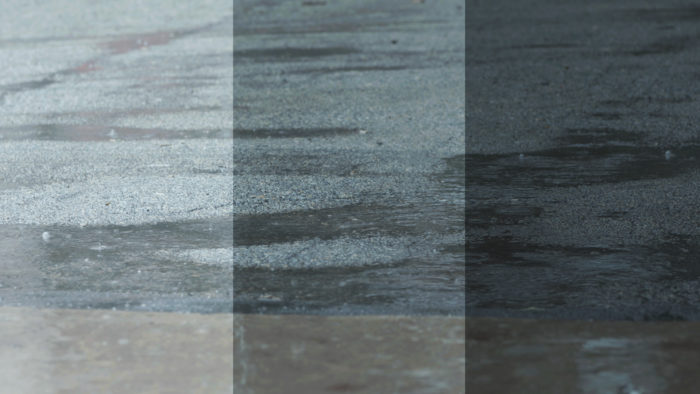Just about everyone that works with lenses or cameras in the industry knows what a polarizer is and what it’s used for. Those who work on productions with a little more of a budget are also probably very familiar with what a RotaPola is, but there are some features that inherently come with RotaPolas when used in tandem with another polarizer that many may not know about.

Just to touch on the basics, if a light hits an object, the color we perceive from it is caused by the object absorbing all the colors from a light and reflecting the wavelength of the color we see it as. For example, a purely green object absorbs all the colors except for green, which reflects to our eyes causing us to perceive green. Glaring occurs when that reflected light travels in a singular direction (polarized). A polarizer reduces/removes this polarized light thus getting rid of the glare.

A rota pola takes the concept of a circular polarizer and puts it in a self-contained 4×5.6 tray with a gear wheel that allows the user to spin the polarizer within the tray rather than spinning the entire mattebox (if it’s a clip on) or finding a mattebox that has a rotating stage built in if you’re mounted on rods. This allows for variable tuning of how much polarized light you want to let in with an easy to use, convenient filter.

However, there are a couple features that the RotaPolas include that users may not be privy to. If you flip the RotaPola around to it’s “B-Side” it turns it into a warming/cooling filter instead. If you use a 4×5.6 Pola in tandem with the RotaPola, it becomes a VND or Variable ND filter, which allows the user to control precisely how much ND they want to apply just by spinning the gear. Users can expect around 2 – 6 stops (depending on focal length) of ND from this feature.
Not as useful, but still interesting is that the gear is based off the industry standard M8 ring for use with focus motors.

Tiffen’s MRT or MultaRotaTray includes a filter stage within the rota tray that you can use to hold their RotaRectGlass 4×5.6 Circular Polarizer to get the VND or Warming/Cooling FX. The RotaRectGlass is 2mm thick compared to a traditional 4mm thickness that allows it to sit perfectly within the Rota Tray. Users may use a standard 4mm filter in the tray as well, however it doesn’t sit as flush as the RotaRect Glass.